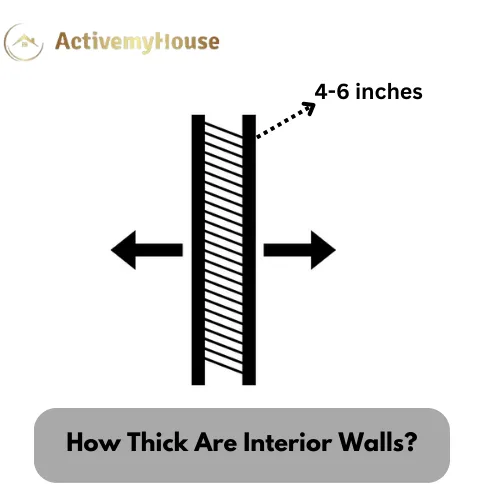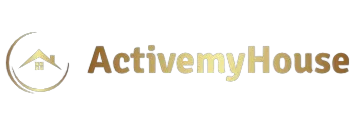Wall thickness has to do with measuring a certain width of a wall and plays a vital role in defining the strength, durability, and functionality of that wall. Accordingly, it varies with the materials, purposes, and structural specifications; for example, a load-bearing wall would be thicker than a non-load-bearing one. Understanding the wall thickness goes a long way in securing safety, energy efficiency, and compliance with building codes in home construction.
In the USA, while an interior wall has a standard thickness of 4-6 inches (including drywall), exterior walls are normally 6-12 inches thick in order to accommodate insulation and other structural requirements.
How Thick Are Interior Walls?

Depending on the materials used and the purpose to which the wall is put, modern construction specifications typically require an interior wall thickness to be between 4.5 and 6 inches. Most interior walls in the United States are commonly constructed with 2×4 studs. Because these are 3.5 inches in width, along with 0.5 inches of drywall on each side, they amount to a total of about 4.5 inches.
If added insulating and soundproofing factors are desired, then 2×6 studs come into play, and thickness increases to 6.5 inches. This is done in accordance with various standards and codes of practice to ensure the strength and utility on account of wiring and pipe and the following of the passing of building regulation codes. Energy efficiency has, in recent times, become a major focus influencing the wall thickness designs in newer constructions.
2×4 Thickness
The actual measurement of a standard 2×4 thickness is, by contrast, 1.5 inches thick and 3.5 inches wide; therefore, it is a composite product. It is common to use this lumber in framing interior walls.
2×6 Thickness
In nominal terms, it is commonly referred to as a 2×6 thickness, but in reality, it measures 1.5 inches in thickness and 5.5 inches in width. Commonly applied in external walls or in internal walls that require additional insulation or soundproofing.
How Thick Are Exterior Walls?

Exterior wall thickness varies according to the construction material and climatic conditions, as well as local building codes, but is typically around 6-12 inches for modern homes. In the U.S., the ordinary exterior wall typically has a 2×6 stud, which is 5.5 inches thick, plus 0.5 inches of sheathing and 0.5 inches of siding on each side, for roughly 6.5 to 8 inches of actual thickness. Colder regions commonly accommodate thicker walls, increasing insulation levels to as much as 12 inches, thereby improving energy efficiency and complying with increasing building-code demands.
More advanced techniques, such as double-wall design or insulated concrete forms (ICFs), are
being incorporated for even further wall thickness and thermal efficiency.
Typically Wall Thickness of Each Method
Here is the list of different types of methods of wall thickness determination and attainment in construction.
| Method | Typical Thickness | Key Features |
| Wood Framing | 4.5 – 6.5 inches | Can use either 2×4 or 2×6 studs; is economical and easily installed; popular for residential projects. |
| Steel Framing | 3.5 – 5.5 inches | Metal studs are tough and fire-safe and are mostly used in commercial buildings. |
| Concrete Block Walls | 8-12 inches | Powerful and long-lasting; used for commercial-residential structures. |
| Brick Walls | 4-12+ inches | Single or double layer with air gap; excellent thermal insulation and beauty. |
| Insulated Concrete Forms (ICFs) | 6-12 inches | Composite foam and concrete: high energy efficiency and strength. |
| Structural Insulated Panels (SIPs) | 4.5-12 inches | Prefabricated panels that are highly insulated and quick to install. |
| Double-Wall Framing | 10-12 inches | Two layers of studs with a gap; improved insulation and noise-proofing. |
| Straw Bale Construction | 18-24 inches | Straw bales plastered; environment-friendly, natural insulation. |
| Log Walls | 6-12 inches | Huge logs have a rustic beauty and provide natural insulation. |
Why should we consider wall thickness?
Wall thickness in construction is extremely important to a building’s structural integrity, energy efficiency, and functioning. It takes into consideration the strength and durability of load-bearing walls while allowing for the insulation, plumbing, and electrical systems.
It is, therefore, essential in ensuring thermal comfort, allowing minimized operating costs, and upholding building codes. Wall thickness also contributes to the soundproofing and fire resistance, making it a factor for liability and comfort. In design and construction, when wall thickness is considered, there is a good balance among performance, costs, and compliance with regulations.
Final Remarks
The influence of wall thickness on home construction is significant, primarily affecting the strength, energy efficiency, and safe stability of buildings for a luxury look. The most critical consideration that a builder would have to assess in terms of wall thickness is its selection according to material, intended use, and environmental needs for durability, comfort, and cost efficiency in structures. Such consideration is expected to lead to multi-pronged efforts of making buildings safer, more efficient, and sustainable from energy consumption perspectives.
USEFUL ARTICLE:
Google Block Breaker

